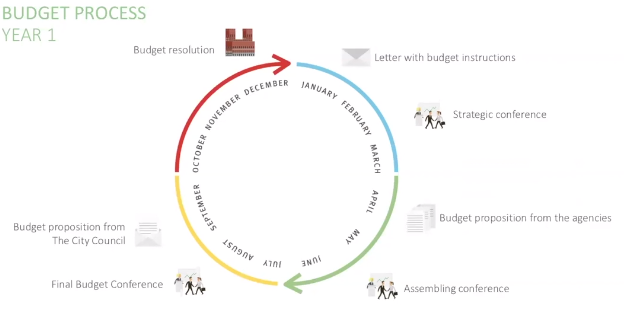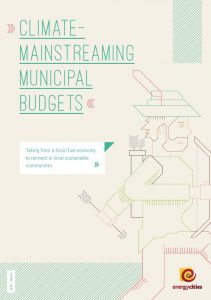Climate budget: a dialogue with Oslo
Count your CO2 emissions the way you count your money
Last November, at the invitation of Energy Cities, Heidi Sørensen, Director of the City of Oslo’s Climate Agency and her colleague, Catrin Robertsen, met with 20 representatives of European cities and French experts to present Oslo’s climate budget, an initiative launched in 2016.
Oslo, Europe’s Green Capital 2019, is Norway’s largest city with 700,000 inhabitants. Nestled between fjords and forests, the city has remained compact despite rapid population growth. Its climate agency, which was set up only 4 years ago, plays a strategic role alongside the municipality. Together, they shape an ambitious climate policy and test solutions that can then be adopted by other cities.
Oslo’s climate budget was launched in 2015 under the previous conservative majority. In October 2016, the new majority maintained and even reinforced this strategy which has attracted much attention from the Norwegian government. The idea was to create a pragmatic “efficient, measurable and transparent” system and to “count emissions the way we count money”.
Strategy and vision
For Oslo, it was a new, pioneering approach and the most important tool for reaching the City’s climate objectives.
- A 95% reduction in GHG emissions by 2030
- A resilient city (adaptation) by 2030
- A combination of adaptation and mitigation policies, implemented by a single department
- Binding measures
- Technical solutions to be invented
- Key sectors: transport, waste, construction
- Climate governance
- Robust green public procurement policy, especially for the construction sector.
- Cooperation with all community stakeholders and with the State.
- Adequate communication strategy: inform about the measures taken and explain why they are necessary!
The climate budget
- Integrated into the ordinary municipal budget (as chapter 2 of the budget)
- Identifies the measures to reduce emissions, costs and the units responsible for implementation
- Counts direct emissions
- The result of joint work by the finance department and the environment and transport department, working with the other municipal departments and 50 local agencies.
Oslo’s climate budget has reached its 5th edition and is upgraded every year. A barometer with 17 monitoring indicators is published three times a year on the city’s website to keep things on track.

Flagship measures
- Urban tolls are a firmly established part of Norway’s landscape, their introduction dating back to 1980, but for some years now, 93% of the charges thus collected have been reinvested in public transport and the development of clean vehicles.
- Fossil fuels will be banned by 2030 and by 2025, only zero-emission cars will be sold.
- Public transport will be carbon-free by 2020.
- The construction sector will be fossil-fuel free by 2020 and zero-emission by 2030.
- Public procurements are a strong lever. The city owns 20% of new buildings. Very strict criteria have been introduced into calls for tenders and a climate & energy fund has been created.
- A “Business for climate” community was created 10 years ago and is actively involved with the city on climate issues.
- Strong communication about co-benefits – do not stop at figures and data. Be available, transparent, ready to listen and discuss. Respond to people’s frustrations.
- Via its Climate & Energy Fund, Oslo provides subsidies to encourage citizens to invest in green vehicles and energy retrofit buildings. These subsidies can complement those granted by the State.
- Installation of a carbon capture and storage system.
To go further
Go to the full version of Oslo’s climate budget https://www.klimaoslo.no/rapporter/english/


